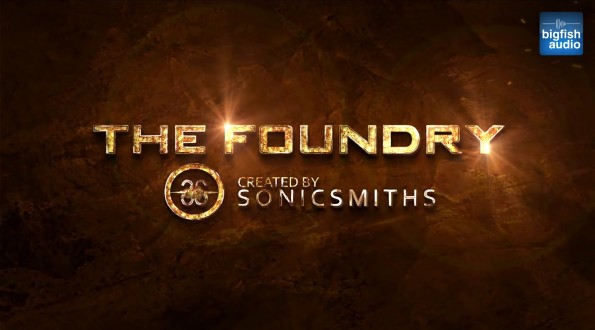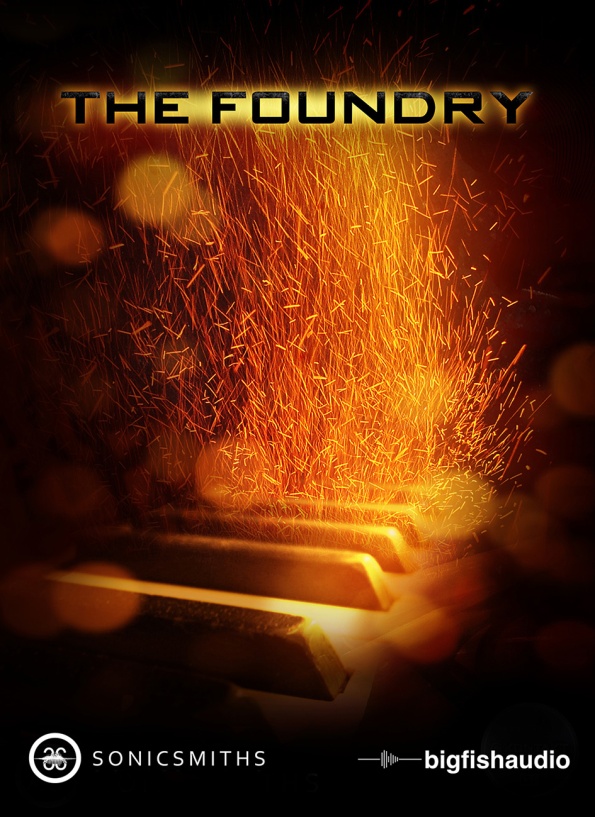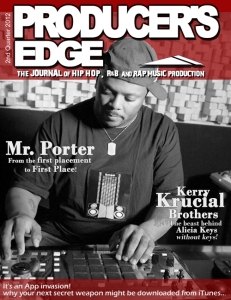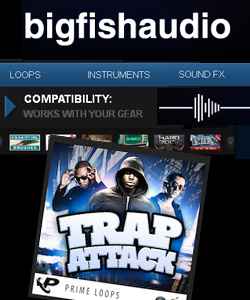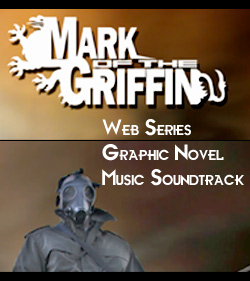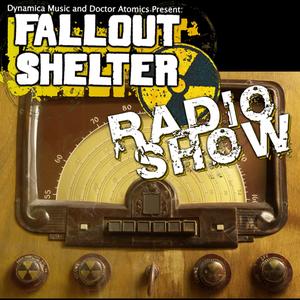Free Jazz Waltz Drum Grooves
MIDI files of Jazz Grooves
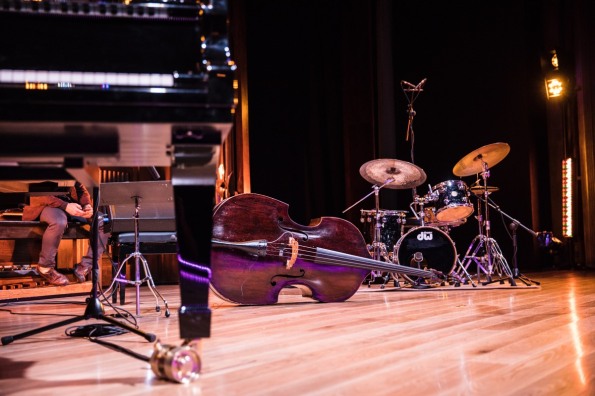
Isn’t it time we did something jazzy? Of course it is! We have a brand new JAZZ WALTZ pack coming up, and you can listen to two sound clips using the Soundcloud player right next to this text. The first one is Toots Thielemans’ classic Bluesette, performed by guitarist extraordinaire Thomas Berglund (Wasa Express, among others).
All drums are pulled straight off the Jazz Waltz pack, which of course was recorded by Magnus Brandell.
AND you can also download a selection of grooves from the jazz waltz pack, by clicking HERE. The grooves are arranged for Toontrack Superior Drummer, EZdrummer, Addictive Drums, Steven Slate 4, I-Map and General MIDI.
How We Interpret Sound-Dr. Floyd Toole
How We Interpret Sound:
An Interview with Dr. Floyd Toole
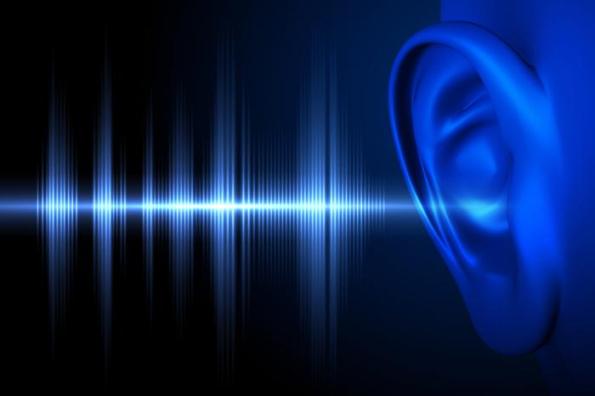
Interpretation is a critical part of life. It determines our likes, dislikes and personal preferences regarding everything from food and clothing to living environment and choice of entertainment.
 To better understand the concept of how people interpret sound, I interviewed famed loudspeaker and acoustics expert Dr. Floyd Toole, who has devoted his entire career to acoustical and psychoacoustical research for the National Research Council of Canada and Harman International.
To better understand the concept of how people interpret sound, I interviewed famed loudspeaker and acoustics expert Dr. Floyd Toole, who has devoted his entire career to acoustical and psychoacoustical research for the National Research Council of Canada and Harman International.
How We Interpret Sound
For some people, great sound is considered to be whatever is popular in current culture. That might be rumbling bass and just enough treble to hear the melody or it could mean an engrossing listening experience that envelops like a blanket on a cold day. Then there are the physical aspects of what is actually coming out of a loudspeaker — something that most people are not aware of, although it’s simpler than you might think.
According to Toole, internal perception and scientific truth are the two elements at play in the way we perceive sound. “The reality is that in the history of audio, the mythology that has built up about certain brands and speaker designs and electronic algorithms and so on … [but] precious few if any of those comments are based on double-blind tests, so the opinions people have expressed were partially formed before they ever heard a sound,” he says. “I did my first double-blind sound test in 1966. I thought I would [use] a [single] loudspeaker and that would be that, [but] this particular loudspeaker was awful. A friend brought [another] … loudspeaker in and it was very different. So I did [a] randomized double-blind listening test. It was very important [that] people not know what they were hearing.”
Everyone in the test agreed on what they liked, and all favored the same loudspeaker — the one with the smoothest and flattest response. Yet the results were not what Toole expected, and to his surprise, he discovered that there had never been any serious scientific research done on the relationship between measurements and subjective opinions of loudspeaker sound quality. He spoke to his boss and began his life’s work.
“I spent the rest of my [career] doing that,” he says. “Everything that followed since those early tests has confirmed those findings: The smoothest, flattest loudspeakers win double-blind listening tests. However, when you go into a store and remember what you may have heard about a product, or listen to a salesman, your mind is partially made up. When listening “blind,” without the biasing influences of price, size, brand and appearance, people turn out to be remarkably similar in [terms of] what they like and dislike.
“Recordings sound better when played through neutral loudspeakers. The goal is for everybody in the audio universe to have neutral loudspeakers. And we’re not far away,” Toole states. “Most of the professionals and [many] loudspeaker manufacturers have figured it out. The problem is, the populace at large is not well-informed.”
“If you are fortunate enough to see a set of anechoically measured curves (i.e., measurements taken in a room with virtually no sonic reflections—Ed.) that are smooth and flattish on and off axis, the loudspeaker is likely to sound good — [that is,] neutral,” he adds. “There’s no mystery to it: If you don’t like what you hear in that loudspeaker, don’t blame the speaker, blame the recording.”
How to Optimize Sound in Your Home
To make the most of your home sound system, it’s no secret that you’ll need quality speakers. “If you purchased a good loudspeaker to begin with, leave it alone.” Toole advises. “Several room equalization techniques exist, implying that any loudspeaker in any room can be made to sound good. [Equalization] may or may not improve the sound of a poor loudspeaker, but unfortunately there is a good chance you could degrade the sound of a good loudspeaker. Two ears and a brain respond very differently to a complex sound field — and are much more analytical — than an omni-directional mic and analyzer. That said, equalization at bass frequencies is almost always helpful in dealing with room “boom” – [that is,] resonances in small rooms.”
According to Toole, the first thing you should do when setting up your home sound system is to adjust all channels to be at the same levels, and so that they all arrive at the right times. Many receivers and processors offer controls that can can assist with this.
In terms of room acoustics, if you start with well-designed loudspeakers, normal furnishing may be all you need. “Some audiophiles think all reflections are bad,” observes Toole, “but such rooms are oppressively dead. It turns out that a happy medium is easily achieved in normal rooms. Bookcases, lamps, tables, chairs, carpet and drapes — all of these things bring room acoustics into the range of acceptability. If you live in such a room, just buy some very good loudspeakers, hook them up, turn on your system, play something you like and enjoy it.”
“Take note of the fact that there is substantial scientific research that has been done to provide guidance,” are Toole’s parting words. “Manufacturers of quality loudspeakers tend to reveal the performance of their products. Others don’t. You should be skeptical of those who don’t.”
Photograph courtesy of Dr. Floyd Toole.
For more information about Yamaha home speakers click here.
Diginoiz FREE Digi Drum Loops 3
Digi Drum Loops 3
Diginoiz releases Digi Drum Loops 3 and it’s FREE until January 5-th
Free Drum Loops (Mid tempo-bangas abound!)

Our good friends over at Diginoiz have seen fit to outfit your drum loop library with an early X-mas goodie-bag.
They just said:
The third part of the Digi Drum Loops series from Diginoiz. Groovy, dynamic, great sounding and fresh! Exported from Diginoiz previously released construction kits. You will find there 50 drum loops in the R&B, Hip Hop, Pop genres ready to be a part of your upcoming projects. If you are looking for drum loops that sound like those from your favorite tracks you are in the right place.
AVAILABLE FORMATS
‘Digi Drum Loops 3’ 50 drum loops exported from previously released Diginoiz construction kits, 176 Mb material (24-bit WAV,) ready to use.
DOWNLOAD DETAILS
Every purchase you make is contains 1 Zip (160 Mb after zip compression),
Wav
- 50 loops (24-bit WAV)
INSTANT DOWNLOAD PRICE 0 EUR (until January 5-th) than 9.90 Euro
More information, free audio demo & demo pack visit:
Sequence: Hip Hop Beat Creator
Product Highlight:
Sequence: Hip Hop Beat Creator
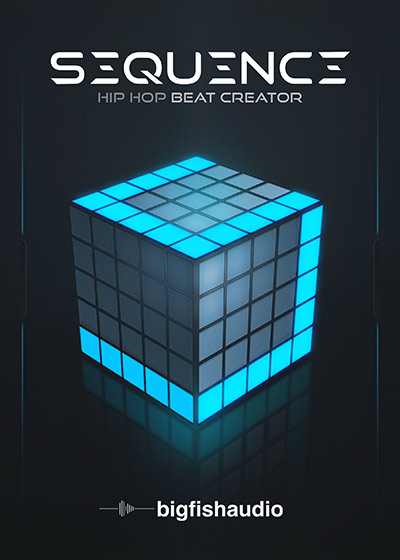
Kontakt Player 5
Kontakt 5
Plug-in
$ 99.95
Big Fish Audio presents: Sequence Beat Production Plug-in
The Soft ware Soft sampler Soft sequencer is Hard to beat at this price.
Big Fish Audio, the top dogs in sample libraries have been known to drop soft-sampler instrument products from time to time. Their newest heavyweight is an NI Kontakt player-powered sequencer called….Sequencer.
“Sequence is another ‘secret weapon’ that adds a sonic palette to your arsenal and brings any producer’s sound into a contemporary context.”
Getting up to speed consists of two download packages. The Installer (~1.1 GB zip) and the Library (~766 MB zip). We updated to the most recent version of Kontakt.
and then registered the library. New to me was Native Access, the preferred method of managing your Native Instrument products. I was very comfortable with their Service Center and interestingly enough, you’ll still need to keep the S.C. handy for legacy products.
https://www.native-instruments.com/en/specials/native-access/

Since the time of the super-producer passed, more has been required of the beatsmith. No longer is the signature sound of a producer the ultimate determining factor of a rapper’s trajectory. Versatility is now key as the digital musician needs more sounds and styles at his fingertips. You are tasked with creating, cloning, crafting and commanding a kaleidoscope of compositions. Let’s face it. Sequence is another ‘secret weapon’ that adds a sonic palette to your arsenal and brings any producer’s sound into a contemporary context. In an average set of hands, you will have all the tools available to nail the most popular styles in today’s commercial spectrum. In the hands of a creative talent, Big Fish Audio’s Sequence is poised to usher in a new tool to facilitate the translation of your imagination into a…
Enough with the flowery talk.
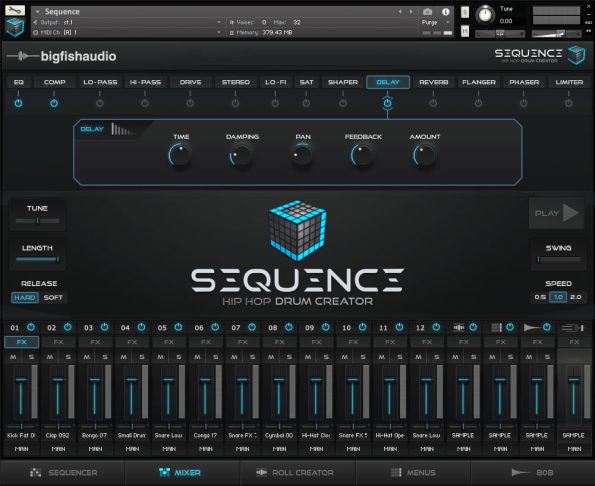
The pros are the interface and stability provided by the Native instruments Kontakt host and the sound design and sculpting potential of Sequence’s sonic engine. The con is the closed system that makes sample/sound import impossible. The promise is more and extended life from future expansion libraries. The plus is the price ($99.00 USD) and ease of use. The negative is ‘if you can’t beat them, join them’. The sonic imprint has taken a few turns in recent years and any producer who hopes to remain relevant needs tools like these. You can’t always remix your ear, but you can add new tools to your studio for additional sonic variety. This is one of those purchases. Enjoy.
Wished for in updates…
1) Session files and modern song starters
2) live recording and
http://www.bigfishaudio.com/Sequence.html
-Griffin Avid
UndergroundHipHop.com shutting down
On January 1, 2017,
UGHH will be shutting down
https://www.undergroundhiphop.com/blogs/ughhblog/this-is-farewell

Posted by Adam Walder on December 27, 2016
“I have some very sad news to share with all of our visitors and wanted to wait until after Christmas so you could all have a happy holiday. On approximately January 1, 2017, UndergroundHipHop.com (UGHH) will be shutting down permanently. We have been fighting our hardest to stay in business for the past few years, but with declining revenues it is impossible to stay in business at this point. Any orders placed will be fulfilled and we will stop taking orders as of tomorrow morning (Wednesday, December 28). When I opened our first online store in 1999, we experienced 60% growth year after year, for over a decade. However, in 2012 revenues plateaued and have been declining ever since. Our overhead is too great (rent, payroll, internet fees, bank loans, credit cards, etc.) and it makes business sense to not continue in what can only be described as an adventure of a lifetime.
I started UGHH out of my Northeastern University dorm room in 1997 as nothing more than a hobby to share the underground hip hop music I loved so much with the world. I had no idea it would lead into a 20 year career doing what I love to do – bringing this culture to the masses. I grew up listening to this music as a kid (I remember being 7 years old or so in the mid 1980’s, and a neighbor giving me a copy of LL Cool J’s – ‘Radio’ and The Fat Boys album dubbed on a cassette) and I was hooked. As a teenager, my music idols were Gang Starr and my favorite MC was Jeru The Damaja. Never in my wildest dreams would I think I would become friends with the artists I grew up on, but I am happy to say I actually became friends with Jeru so… my life is complete 🙂 If you want to read more about the 20 year journey of UGHH, go here
Running your own business is incredibly hard (and rewarding) work and I am very proud with what my team and I were able to achieve with this website. We had a retail store for ten years (another dream of mine come true), became close friends with many of the artists we are fans of (I went to Apathy’s wedding!), and helped so many labels and artists get the exposure they deserved. I could have worked a standard office job after college, but I followed my dreams and created a world renown, highly respected website loved by many.
There have been so many people who have contributed to helping make UGHH what it is today and there is no way I can list them all. I would like to give a special thank you to my staff who stuck it out with me to the very end – Jeremy (15+ years at UGHH), Aaron (10+ years at UGHH), Tommy (5+ years at UGHH), and Ian (he stopped working at UGHH 1.5 years ago after 10+ years on the job but has been my personal therapist since then). Thank you to the forum moderator Clokworx, who contributed his time to keep our forums running as smoothly as possible as well as all other mods. An extra special shout out to my wife and children, who were patient enough to put up with the ups and downs of the business and some very long work days.
There are many great websites to get your hip hop from, but some recommendations include: GetOnDown.com (for product and they should be expanding their catalog greatly in 2017), 2DopeBoyz.com (for videos) and HipHopDX.com (for news). There are so many great labels putting out quality product, but some suggestions are: Snowgoons, Ill Adrenaline, Mello Music Group, HiPNOTT Records, Rhymesayers, Fat Beats, HiPNOTT, and too many more to list.
I wish the best of luck to all of the artists, producers, record labels, distributors, etc. who make a living from hip hop music. You are doing this for something much deeper than a paycheck, and I respect you all for that. Thank you to all of our customers who have made purchases from us over the years. We have customers who have been dedicated to shopping with us for well over a decade, and I thank you from the bottom of my heart for thinking of UGHH when you were thinking about hip hop. Until the next adventure…”
– Adam Walder
Founder, UndergroundHipHop.com
Sad, sad news as so many good and interesting times were spent on the forum. Not only did so many magazine staples come from there, including Sean Maru, Redsecta Mastering, SoundsforSamplers and BanginBeats etc….. a huge amount of subscribers came from that forum. And…and there were so many crazy threads on their forums. Some real wacky stuff used to go down. Unfortunately spending habits change with generations. UGHH will always be missed. A great many things passed in 2016.
-Drew Spence
Arturia DrumBrute: Analog Drum Machine & Sequencer
DrumBrute is a powerful beat-making instrument
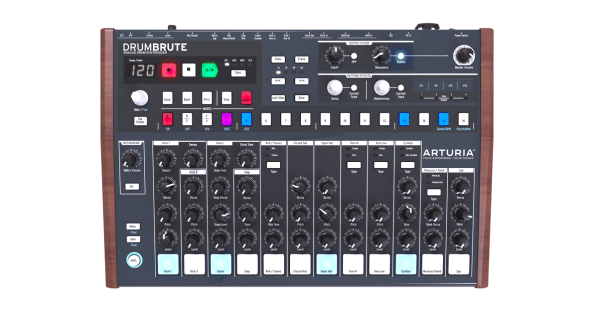
DrumBrute is an all-in-one analog drum machine designed with performance and in-depth sound editing at its heart.
Providing 17 distinct, fully analog drum and percussion instruments with an intuitive sequencer, massive connectivity, a two-mode Steiner-Parker filter, and dynamic performance controls, DrumBrute will take your beat production to the next level.
Create energetic and exciting drum beats with a single, user-friendly device. With its vast sonic potential and smooth workflow, DrumBrute meets and exceeds the expectations of demanding musicians. Bridging the gap between inspiration and technology, DrumBrute offers punchy analog drum sounds, advanced 64 step / 64 pattern sequencing possibilities and ultra-effective performance controls.
Find out more: https://www.arturia.com/products/drumbrute/overview
Arturia DrumBrute Key features:
- Analog powerhouse: DrumBrute contains 17 fully analog drum & percussion instruments, including two kicks, snare, clap, open & closed hats, high & low toms and conga, maracas, rimshot, clave, tambourine, zap, cymbal, and even a reverse cymbal.
- Exciting synth features: the main output contains a highly regarded two-mode Steiner-Parker filter, allowing you to add dynamic frequency sweeps and satisfying bass drops. Not only that, but every drum sound has multiple parameters that can be tweaked to achieve your perfect kit.
- Easy to use, quick to learn: each one of DrumBrute’s 64 sequences can contain up to 64 steps, and can be chained together in a song mode. Despite this massive performance power, punching in your perfect beat is simple and fast. Fans of vintage drum machines will feel right at home with the familiar layout.
- No menus: every feature has its own dedicated button, knob, or pad, so you’ll spend less time navigating endless sub-menus and more time making music.
- In-depth editing: get in the groove with the natural Swing feature, inspire yourself by dialling in some Randomness, mix up your rhythm with Step Repeat, Roller and Looper functions, accent particular drum hits to add some punch to your beat… DrumBrute has a wealth of advanced features that will satisfy even the most discerning musicians and producers.
- Plays well with others: DrumBrute has extensive connectivity and sync options, including MIDI, Clock, 1PPS, 2PPQ, DIN24, and DIN48. This means that DrumBrute will work seamlessly with all of your other modular, synth, and sequencing gear.
- Amazing in the studio: DrumBrute boasts dedicated audio outputs for each instrument channel giving almost limitless options for external processing and multitrack recording; 3.5mm and ¼” headphone outputs so you’ll never have to hunt out an adapter again; and it can act as a fully-fledged MIDI interface to control your DAW. DrumBrute is an essential tool for the modern producer.
- Reliable on stage: with rugged housing, chunky pads, and wiggle-free knobs, DrumBrute can be relied upon to perform show after show. Always striving to improve with every new release, Arturia have created a strong, enduring instrument that’s ready for life on the road.
- Punches above its weight: DrumBrute stands toe-to-toe with the leading drum synths on the market, but at a fraction of the price. No other all-analog drum machine features such inspiring and dynamic features while retaining a sense of intuitive, tactile fun.
- ————————
-
DrumBrute is priced at 449€ / $499.
DrumBrute will shortly be shipping, and will be arriving at your local music store in November. DrumBrute is available to order now from the official Arturia web store, and from retailers worldwide.
For more information on features, specifications and dimensions, visit: www.arturia.com/products/drumbrute
Samplephonics: 808s hidden production secrets.
Samplephonics has the hook up …
——-
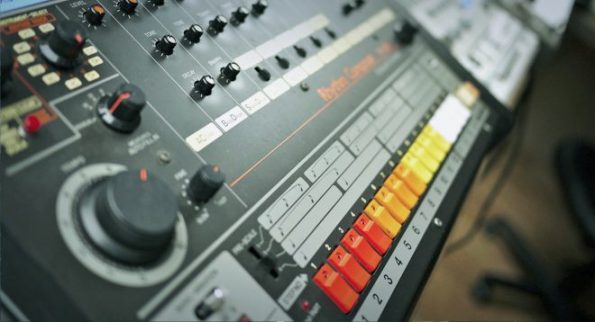
Whether you are using the real thing, one-shot drum samples or the Samplephonics 808 virtual instrument, there is more to the classic drum machine than meets the eye. In this post, we unearth some of the 808’s hidden production secrets.
1. USE THE BASS DRUM AS A SUB BASS
Probably the least secret of all the TR-808’s ‘hidden’ features is the ease with which its Bass Drum sound can be pressed into service as sub bass instrument – it’s just a sine wave with a pitch envelope, after all. Set the hardness of the attack with the Tone control, the length of the note with the Decay, and pitch it up and down to ‘program’ a bassline using your DAW’s automation system.
2. AMBIENT COWBELL FX
Arguably the most instantly recognisable of all its voices, the crazy TR-808 Cowbell played a major part in defining the beats of countless old-skool RnB and hip-hop cuts. Although it carries too many stylistic connotations to be used ‘as is’ in most modern productions, drenching it in cavernous reverb and/or delay can turn it into a beautiful, frequency rich sound effect.

3. TUNED PERCUSSION
The 808’s Toms and Congas come in High, Mid and Low versions, giving you three distinct notes to play with. For more complex melodic parts, however, simply automate their Tuning (pitch) controls in your sampler. Try to restrict each of the three samples to as short a range of pitches as possible to maintain their sonic integrity, though.
4. DUB-STYLE CYMBAL FX
The longest sound in the 808’s arsenal (almost five seconds at maximum Decay) and bursting with scintillating high frequencies, the Cymbal makes great fodder for dubbed-out filter feedback delay effects. Shove it through a suitably equipped delay plugin (Audio Damage Dubstation or Soundtoys EchoBoy, for example), crank the feedback up to ‘freeze’ the cymbal, then play with the filters in real time to manipulate the resulting ‘wash’ of sound. Insert a limiter first, though, as the volume will quickly get out of hand!
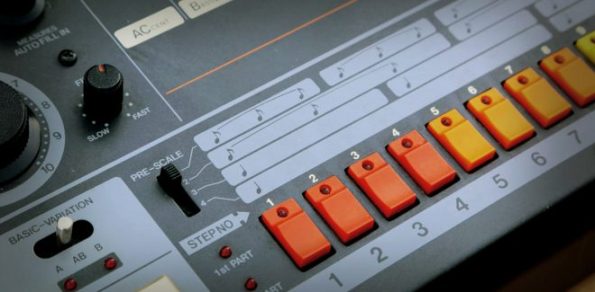
5. TRIGGER OUT PERCUSSION
Each of the TR-808’s three trigger outputs delivers a series of 20ms pulses following the Cowbell, Handclap or Accent patters, that can be used to fire off other drum machines, synths and sequencers via their CV/Gate inputs. Obviously, such functionality isn’t necessary with your software 808 emulation, but the sound of the trigger out signal itself works as a great glitchy percussion hit, as used most famously (and frequently!) by Egyptian Lover. To work it into your tracks, hunt down a sample of it and add it to your 808 sampler patch.
6. THE LOW TOM KICK DRUM
The 808 Bass Drum is one of the greatest sounds in electronic music, but you don’t have to limit yourself to it when programming authentic 808 kick parts. Pitched down, the Low Tom serves as a fine alternative, offering a subtly different tone that can work well on its own, or as a second, distinct voice for ghost notes or simple note-to-note variation.
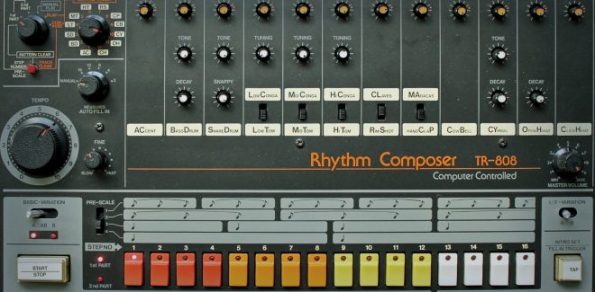
7. SNARE RIENFORCEMENT
Although the 808 Snare Drum is a fantastic, characterful option when you don’t need a great deal of power in your backbeat, its lack of weight could reasonably be considered a downside in most other settings. Bolster that notoriously thin sound by layering a Tom or Conga under it, carefully tuned and with a short Decay – instant body and depth!
8. IT’S NOT JUST FOR DRUM KIT PARTS
Like any drum machine, the 808 is primarily thought of and employed as a source of kick/snare/hi-hat patterns, but even if you’ve already got your main drum kit together via other means, keep it in mind as a generator of complimentary ‘Latin’ percussion parts. The Conga, Cowbell, Claves and Maracas sounds sit together beautifully and are ideal for adding a bright, funky top end layer to any drum track.
More on the Samplephonics blog…
http://www.samplephonics.com/blog/808-secrets-8-things-you-didnt-know-you-could-do-with-an-808/
513 Free Analogue Tube Drum Samples!
FREE goodies from our friends over at Samplephonics
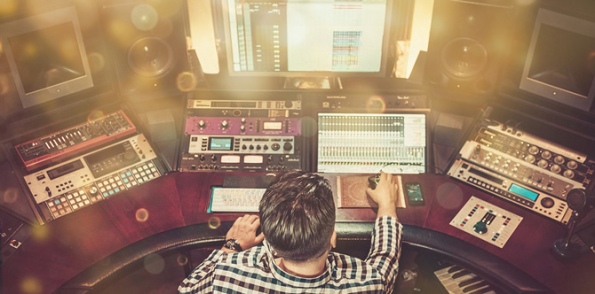
Samplephonics says:
Some time ago we gave away some deliciously tasty drum one shots that had been processed with some gorgeous analogue tube saturation. Since then, the Samplephonics community has grown dramatically and we thought it would be a shame to deprive all of our noobies from the tube goodness!

513 FREE ANALOGUE TUBE DRUMS SAMPLES!
We hope you enjoy this gift and turn these little beauties into something special. Send what you create with them to info@samplephonics.com
Until next time!
– The Samplephonics Team
What Exactly Does Producer Mean, Anyway?
REPOSTED FROM HERE: http://flypaper.soundfly.com/tips/what-exactly-does-producer-mean-anyway/
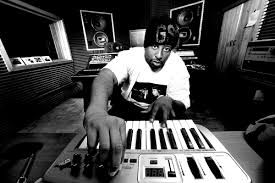
What Exactly Does “Producer” Mean, Anyway?
Music production. The term likely conjures mythical images of Sir George Martin running frantically around Abbey Road Studios, or Phil Spector conducting a massive orchestra. In their time, the term “record producer” simply referred to the person overseeing the completion of the musical product. Given the myriad music-making tools at our disposal today, however, this once-simple definition has become diluted and confused. So let’s clear up a lot of common confusion around the modern record producer’s roles, responsibilities, and duties.
“Producer” Defined
According to the performers rights organization BMI, “a producer is to a recording as a director is to a film. When it comes to making a film, the buck essentially stops with the director. It’s the director who steers the ship, working with everyone from the technical editors to the actors in order to achieve his or her overall vision of the movie. It is exactly that way with a producer when it comes to making a recording.”
In musical terms, this means that a producer needs to have the technical expertise to make critical decisions about a mix with the engineers, the songwriting expertise to craft the arrangement of songs with the artist, and the entrepreneurial acumen to manage budgets, find studios, and negotiate contracts. In short, the producer guides the creative process, acting as part project manager, part creative consultant, and part artist.
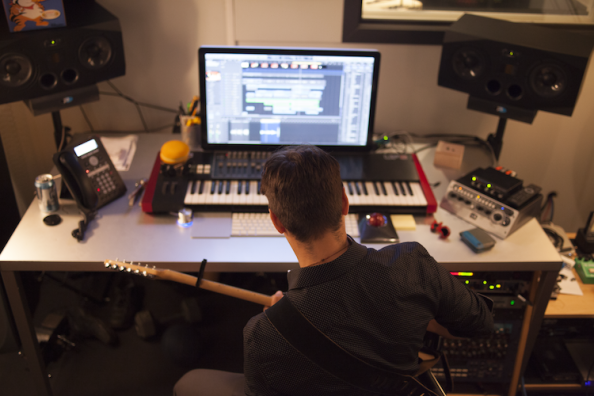
A Producer’s Role in the Recording Process
In this traditional sense, the producer must possess a set of technical skills, as well as the big-picture mindset to manage the project from above. To help craft the “sound” of an album or project, the producer must understand the nuance of engineering a full mix in order to knowledgeably ensure that certain sounds are more emphasized than others, and that the mix carries the artistic message intended by the project. At the same time, the producer must have an understanding of the recording process; finding the right studio with the right equipment to record the right sounds is essential to the mix, the sound, and the perception of the album.
With the rise of the Digital Audio Workstation, the traditional studio and analog model have been turned inside out. What happens to the notion of a producer when the “studio” is contained inside a computer?
What’s more, while recording, the producer must be able to coach the musicians on getting the right sounds out of the instruments at hand — be it vocal takes in the booth or different voicings of the same chord on a piano. In this way the producer also treads into songwriting territory, often helping to craft the trajectory of the track.
+ Learn more: Explore chord voicings and much more in our course, “The Building Blocks of Piano”
Of course, as with most deeply artistic endeavors, this role varies project-to-project, and indeed, producer-to-producer. Though it sounds like a lot, different genres and artistic styles have different needs. According to producer Donny Baker, “the music producer is hired because of his ideas in your genre of music.” That is, often, producers will have a specific specialty that they excel in; this specialty, likely their genre-based experience, will make them a desirable managerial and stylistic compliment to the project at hand. For instance, sometimes a project needs someone to think about instrumental arrangement, whereas other times artists will want complete control over that aspect of their songs. Producer Phil Ek sums it up: “I think a good producer agrees with what is the best for the band and helps bring out the best and makes it sound the best and have them perform at their best. Whether it’s the producer’s idea or not, that’s the proper creative direction.”
The Rise of the Digital Audio Workstation
In years past, a producer would fill these traditional roles across a project slated for release through a label, and would get work through studio-based projects and timelines. However, with the rise of the Digital Audio Workstation (or DAW, for short), the traditional studio and analog model have been turned inside out. What happens to the notion of a producer when the “studio” is contained inside a computer?
It gets even trickier for the so-called “bedroom producer,” who pulls samples and software synths together into an album. The beatmaking, songwriting, mixing, and engineering all take place simultaneously in the DAW.
The answer, as you might have guessed, is rather complex, and has lead to a fragmenting of what one might traditionally consider a record producer, as well as a heated debate within the music community at large. But, in many ways, the roles are still similar, and the difference hinges on one key distinction: beatmaker vs. record producer.
Beatmaker vs. Producer
In simple terms, the distinction between a beatmaker and a record producer is similar to the difference between an old fashioned songwriter and a record producer: the songwriter would simply be in charge of writing the song, which would be in turn performed in the studio by musicians and artists who would ultimately release the song. (Note: This still occurs, but is much more confined to the upper-echelons of pop songwriting.) The analogy holds: the beatmaker creates the beat or beat idea, which is sold or absorbed by an artist’s project and turned into a full-fledged song by the producer.
However, in increasingly popular forms of songwriting that are informed by technological production in DAWs, this distinction treads into murky waters. What if, say, a producer of a hip-hop album made a beat in a DAW that the artists runs with, only for the producer to come in and engineer the vocal performance, all of which is sent off to a separate mix engineer to be glued together. The “producer” is now beatmaker, songwriter, and record producer all in one. It gets even trickier for the so-called “bedroom producer,” someone like the artist XXYYXX, who pulls samples and software synths together into an album — in this case, the beatmaking, songwriting, mixing, and engineering all take place simultaneously in the DAW.
The distinction between beatmaker and producer is in whether someone makes a beat and hands it off to be turned into a song, or whether they make a beat and a songwriting idea and see it through to completion.
How can we sift through these semantic weeds? And why does it even matter? Well, crediting in the music industry is a big deal — and getting paid for work done matters immensely to producers, managers, and artists alike. Ultimately, the distinction between beatmaker and producer lies in differentiating between someone who makes a beat and hands it off to a crew of people to turn into a song, and a person who makes a beat and a songwriting idea and sees it through to completion with the artist, album, or project. If you’re doing all of that work to take a musical concept to market, then you’re producing. Maybe in this example the producer also gets a songwriting credit — but they still craft the final product.
In this way producing is more accessible than ever — but making a beat in Ableton isn’t producing outright. The challenge still remains: can you write, record, engineer, mix, master, and release your own material on your own or with an artist on your team? Taking that next step — that’s the mark of a true producer.
Other articles from Myles Avery
The Foundry by Sonicsmiths from Big Fish Audio
New release being put through its paces…. (Source: http://www.bigfishaudio.com/The-Foundry)
BIG FISH AUDIO presents THE FOUNDRY
The Foundry is a Musical Sound Design Tool, based in Native Instruments’ Kontakt 5.4.1 Library. Availible through Big Fish Audio for $299.
Sonicsmiths presents a new tool for composers and sound designers. Based in the Native Instrument’s Kontakt engine, The Foundry is a sound design creation tool, drawing from over 18,000 samples, 19+ GB of sample content (12+ GB compressed), and trillions of ways to manipulate and combine the sounds. Never settle for presets again; The Foundry creates original patches using the groundbreaking AARE algorithm.
AARE – Adjective Assignable Randomizer Engine
Instead of having to search through thousands of presets for a specific sound, we have designed a randomizing engine that creates a new patch for you based on simple adjectives. For example, if you want a Dark, Pulsing, Mysterious sound, select these adjectives, press a randomizing button, and The Foundry will generate new patches based on the parameters you select.
OTHER FEATURES
• Template Mode: Make any sound Pulse, create Drops/Rises, or instantly put The Foundry into other modes such as Long Release, Hard Attack, etc.
• Body Designer: With over sixty different body types, you can manipulate each of the “core” sounds by sending them through different material types, such as tubes, bricks, glass, dog bodies, and more!
• 6 modulators assignable to Filters, Pitch, Amplitude, and Surround Panning allow for a wide range of stuttering, pulsing, frequency modulation, and many standard synthesis techniques.
• Graining Synthesis: You can take most of the patches in the library and add the granular synthesis effect, with stretching, panning, and many other ways of manipulating the sound.
• Surround Mode: Set all four sounds to go out different channels, as well as pan in surround.
• Unique reverb selections: including Swaps, Churches, Studios, etc.
• Fully adjustable Filters, Distortion, Compressors, Delays, Panning Rotators, Surround Routing Abilities, and many more creative tools.
PURCHASE HERE: http://www.bigfishaudio.com/The-Foundry
